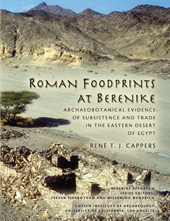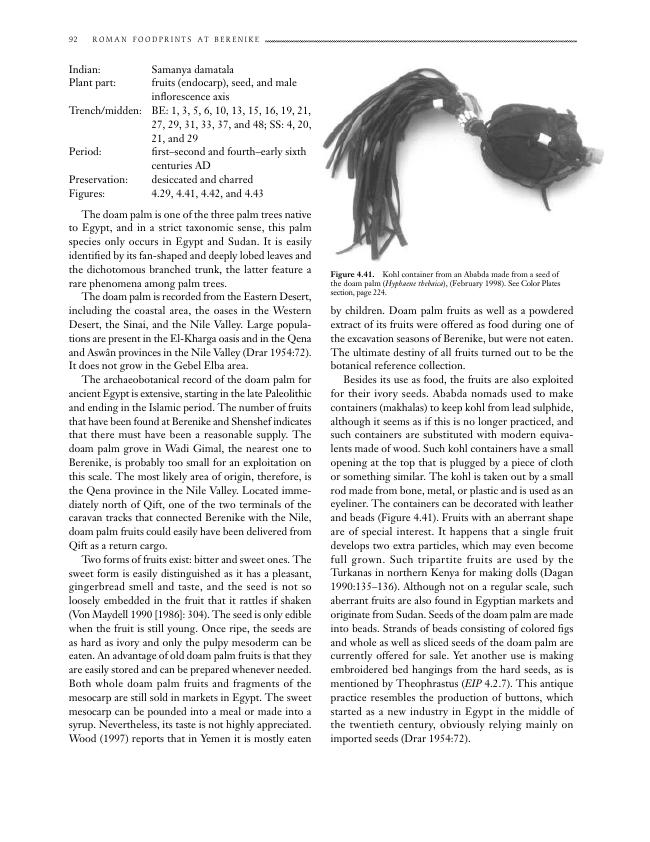2006 - ISD
E-book
Digital Version
Download | Copy/paste | Printing
Roman Foodprints at Berenike : Archaeobotanical Evidence of Subsistence and Trade in the Eastern Desert of Egypt
248 p.
- During the Graeco-Roman period, Berenike served as a gateway to the outside world together with Myos Hormos. Commodities were imported from Africa south of the Sahara, Arabia, and India into the Greek and Roman Empire, the importance of both harbors evidenced by several contemporary sources. Between 1994 and 2002, eight excavation seasons were conducted at Berenike by the University of Delaware and Leiden University, the Netherlands. This book presents the results of the archaeobotanical research of the Roman deposits. It is shown that the study of a transit port such as Berenike, located at the southeastern fringe of the Roman Empire, is highly effective in producing new information on the import of all kinds of luxury items. In addition to the huge quantities of black pepper, plant remains of more than 60 cultivated plant species could be evidenced, several of them for the first time in an archaeobotanical context. For each plant species detailed information on its (possible) origin, its use, its preservati
- on qualities, and the Egyptian subfossil record is provided. The interpretation of the cultivated plants, including the possibilities of cultivation in Berenike proper, is supported by ethnoarchaeobotanical research that has been conducted over the years. The reconstruction of the former environment is based on the many wild plant species that were found in Berenike and the study of the present desert vegetation. [Publisher's text].
- Special access authorizations may apply; please contact us for further information.
-
Information
ISBN: 9781938770289



